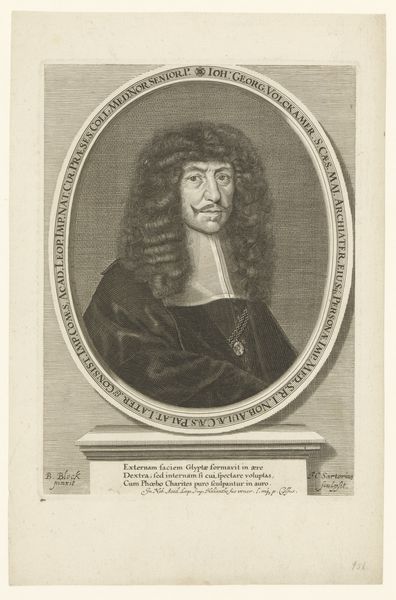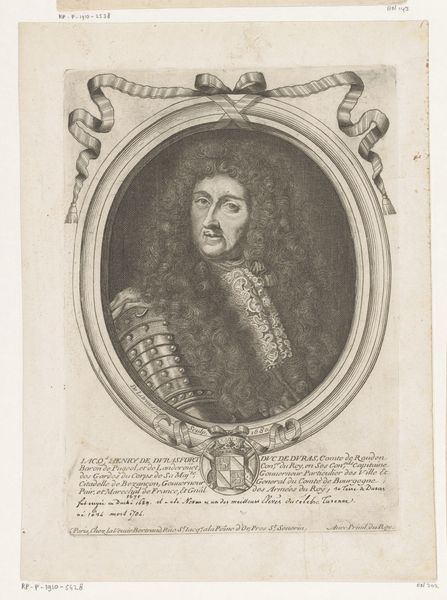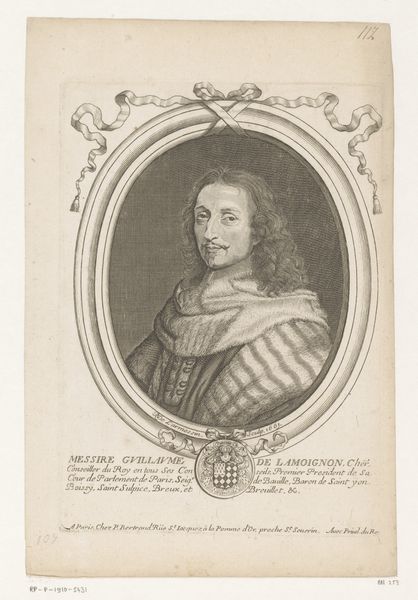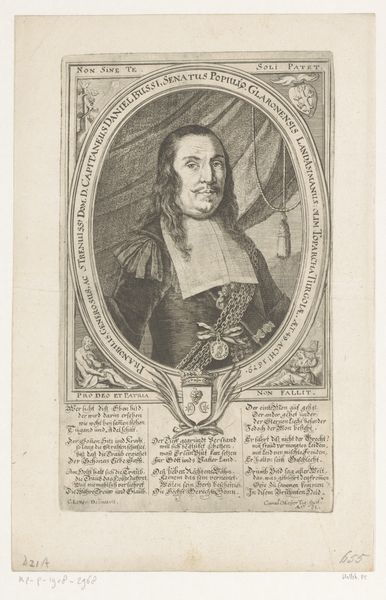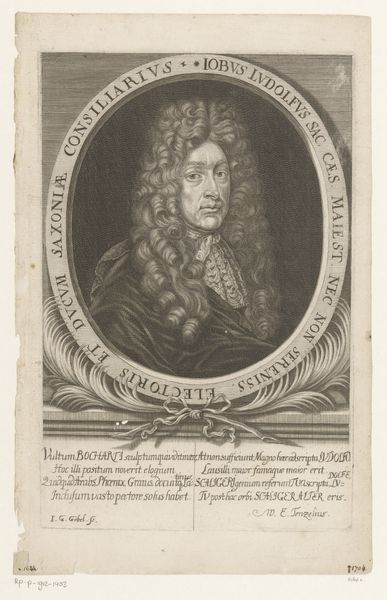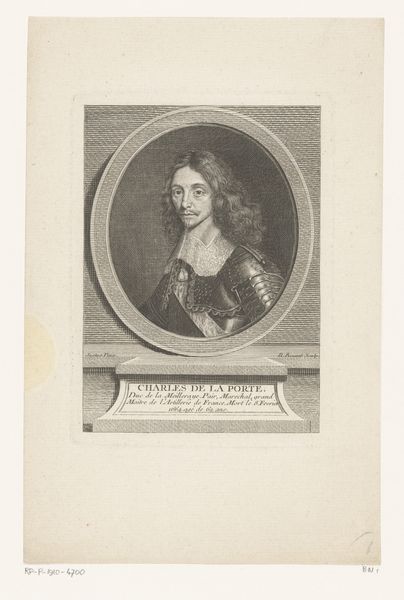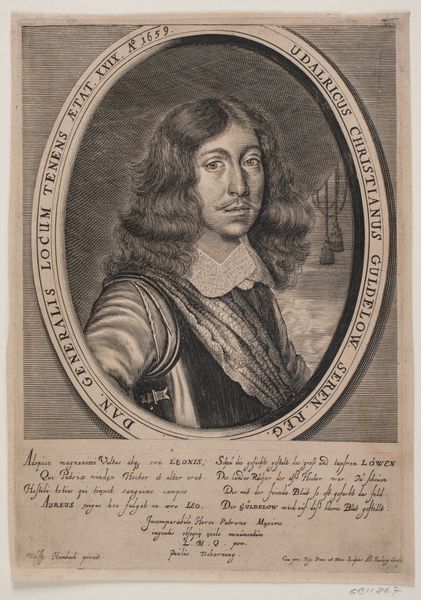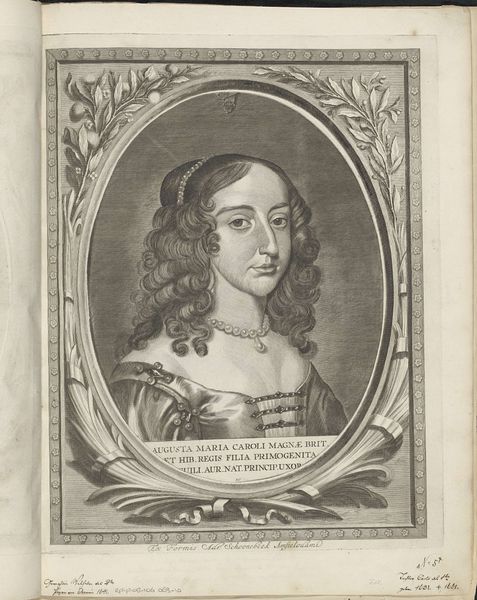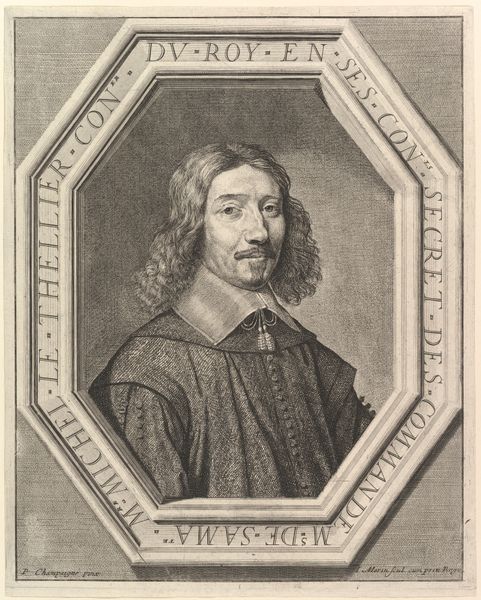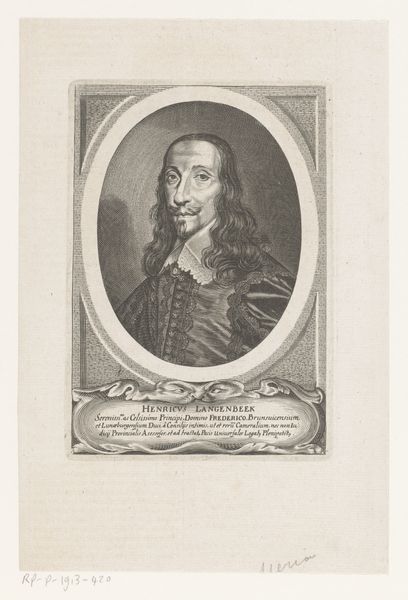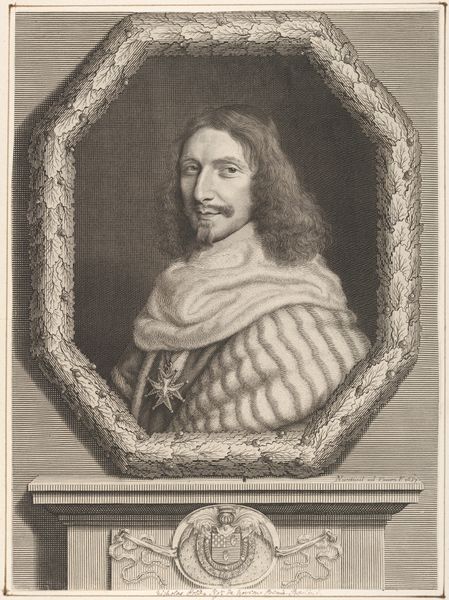
print, etching, engraving
#
portrait
#
baroque
# print
#
etching
#
engraving
#
realism
Dimensions: height 242 mm, width 161 mm
Copyright: Rijks Museum: Open Domain
Editor: This is a print, "Portret van Francesco I d' Este," made in 1670 by Cornelis Meyssens. It’s an etching and engraving of a man in elaborate dress, framed in an oval. It strikes me as quite formal, even severe. What do you see in this piece? Curator: Beyond the immediate impression of formal portraiture, I see a potent representation of power and constructed identity within the Baroque era. Consider Francesco I d'Este, not simply as an individual, but as a symbol of his Duchy and his alliance with French military power, advertised quite explicitly in the inscription below. Editor: So, it’s less about him as a person, and more about his role? Curator: Precisely. Think about the very act of commissioning this portrait: how did it intend to construct and disseminate ideas about masculinity, leadership, and dynastic authority? Consider also the artistic choices of Meyssens: What does the precise engraving communicate about class? Does the detailed armour have a symbolism to you? Editor: It definitely seems to emphasize military strength and, almost, invincibility, perhaps. Curator: Indeed! And consider that carefully curated image of strength set against the backdrop of the shifting European power dynamics and Thirty Years' War that shaped Francesco’s world. It raises crucial questions about how power intersects with artistic representation. How might we interpret that within, say, a postcolonial framework? Editor: That’s fascinating. I hadn't thought about it that way. Now I see the portrait as less a record and more a carefully constructed…statement. Curator: Exactly! And that opens up all sorts of possibilities for critical engagement.
Comments
No comments
Be the first to comment and join the conversation on the ultimate creative platform.
